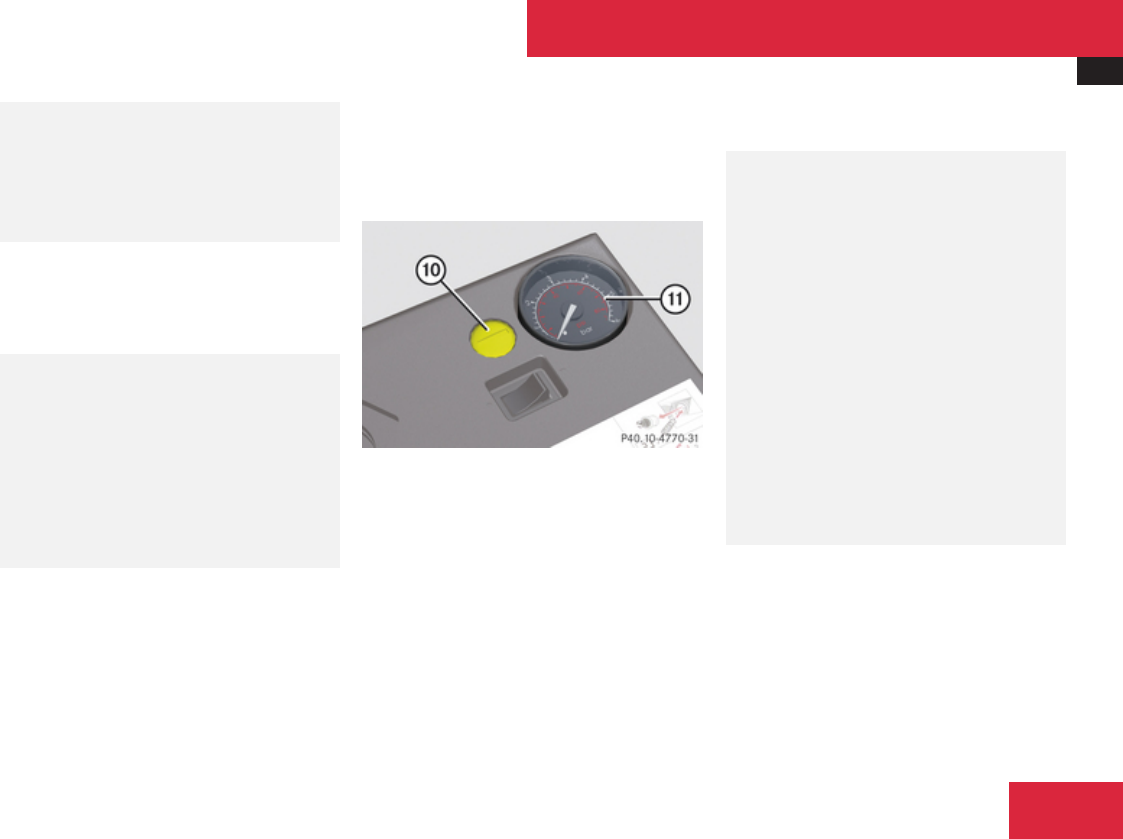
Flat tire
359
The sticker must be attached on the
instrument cluster where it will be easily
seen by the driver.
Vehicle handling characteristics of a
TIREFIT repaired tire may change. Adapt
your driving accordingly.
X
After driving the vehicle for an initial
10 minutes, check the tire inflation
pressure using pressure gauge on the air
pump.
G
Warning!
If tire inflation pressure has fallen below
20 psi (1.3 bar) do not continue to drive the
vehicle.
Park your vehicle safely away from the
roadway and contact the nearest
authorized Mercedes-Benz Center or
Roadside Assistance.
Have the damaged tire replaced.
If the tire inflation pressure is at least 20 psi
(1.3 bar), inflate or deflate the tire to the
correct tire inflation pressure (see Tire and
Loading Information placard on the driver’s
door B-pillar):
Version 2
a
Deflate button
b
Pressure gauge
X
To increase tire inflation pressure: Switch
on the electric air pump.
X
Version 1: To decrease tire inflation
pressure, open vent screw a on pressure
gauge b (Y page 357).
or
X
Version 2: To decrease tire inflation
pressure, press yellow deflate button a
located in air pump housing next to
pressure gauge b.
G
Warning!
Follow recommend inflation pressures.
Do not overinflate tires. Overinflating tires
can result in sudden deflation (blowout)
because they are more likely to become
punctured or damaged by road debris,
potholes, etc.
Do not underinflate tires. Underinflated
tires wear unevenly, adversely affect
handling and fuel economy, and are more
likely to fail from being overheated.
Do not overload the tires by exceeding the
specified vehicle capacity weight (as
indicated by the label on the pillar in the
driver’s door opening). Overloading the
tires can overheat them, possibly causing a
blowout.
X
Drive to the nearest qualified workshop,
e.g. an authorized Mercedes-Benz Center,
to have the damaged tire replaced.
X
Recommended duration of use: A
maximum of 300 miles (500 km) at 50 mph
(80 km/h) or below with the recommended
tire inflation pressure.
Practical hints
Z


















